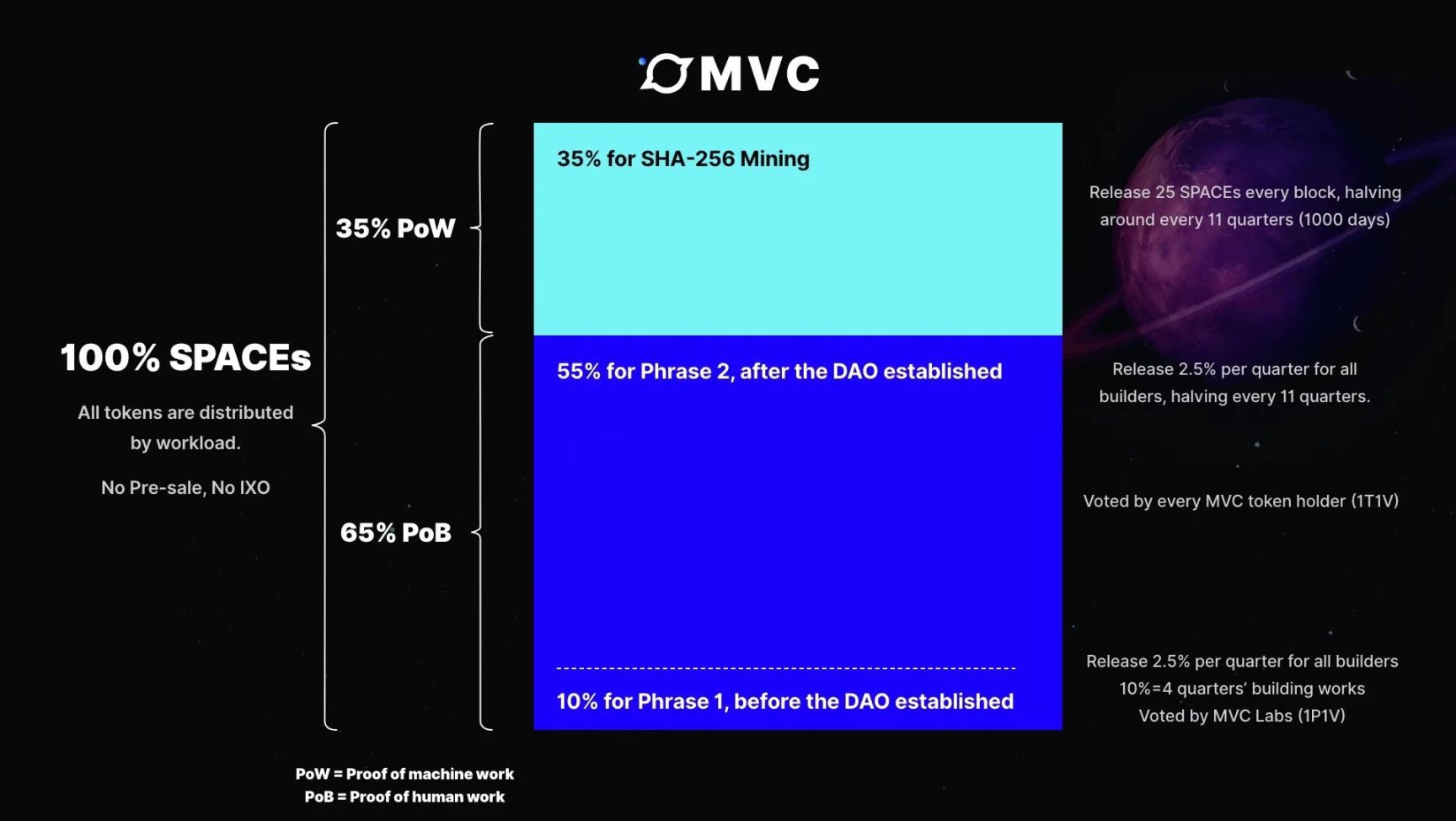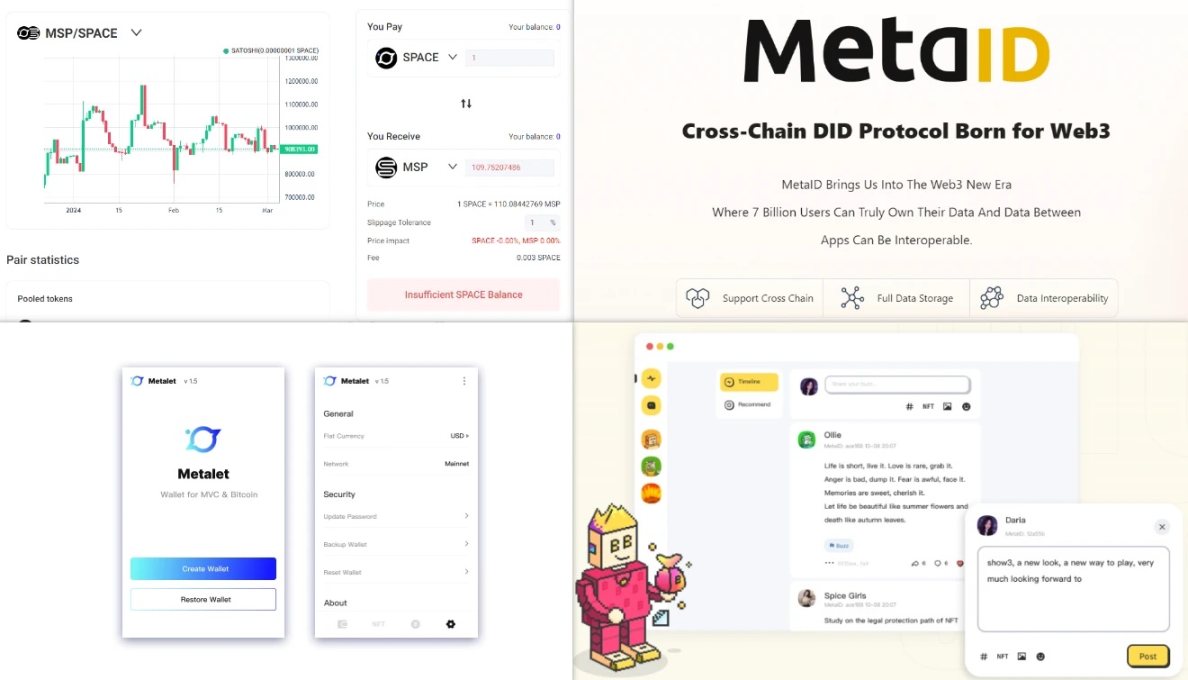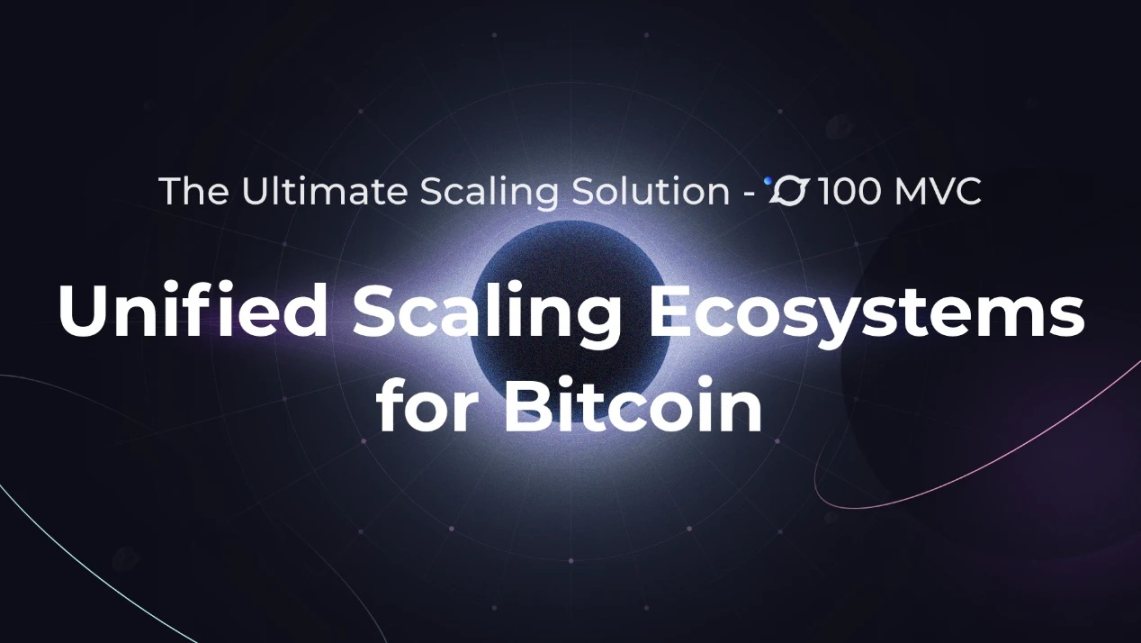Author: Nan Zhi, Odaily Star Daily
Introduction
After Ordinals opened the spring of the Bitcoin ecosystem, various protocols and applications of the Bitcoin ecosystem began to flourish, leading to a series of protocols directly based on the Bitcoin network, such as BRC-20, Atomicals, and Rune. However, due to the limitations of the Bitcoin network, it is difficult to support the development and adoption of large-scale applications. At one point, Bitcoin network transaction fees exceeded 500 sats/vB, and the cost of minting multiple high-volume popular inscriptions reached several million US dollars.
On the other hand, with the upcoming Bitcoin halving, the enthusiasm and demand for the development of the Bitcoin ecosystem are increasing. The market urgently needs practical and effective expansion solutions to maintain the development and operational needs of the ecosystem, and to support the long-term operation of the Bitcoin network through fee-bearing and promotion. Imagine if there is a network that can inherit the security and characteristics of the Bitcoin network, while also being able to support high-concurrency user demands and seamless asset migration. Developers would be able to fully create applications for the general public, and the large-scale application of Bitcoin and its ecosystem would no longer be distant. It may even have the opportunity to become popular worldwide with the advent of spot ETFs.
Bitcoin Expansion Plan
Up to now, the exploration of expansion plans for Bitcoin has never stopped, especially with the emergence of numerous BTC Layer2 solutions at the end of 23. Each expansion plan adopts different technologies and can be divided into the following three categories based on system architecture:
- Bitcoin homomorphic solutions;
- EVM solutions, establishing cross-chain solutions for Bitcoin network assets;
- Other non-Bitcoin homomorphic, non-EVM solutions, such as Lightning Network, Stacks, etc.
MVC (MicrovisionChain) is one of the few expansion plans that achieves Bitcoin homomorphism, including UTXO model, consensus algorithm, and a 1:1 token quantity, allowing seamless migration for Bitcoin network users, developers, and miners. Specifically, compared to other expansion plans, Bitcoin-based expansion has the following prominent advantages:
- Highly compatible assets and ecosystem: For sidechains, based on their underlying design, specific assets can circulate natively in various sidechains and Layer2 solutions. MVC can support the transfer of Bitcoin and also cover a series of assets such as BRC-20. The compatibility of the ecosystem eliminates the need for cumbersome redevelopment work, enabling rapid migration and user access, to achieve rapid user growth in a short period of time;
- Seamless migration user experience: Users can manage assets in both the Bitcoin network and its expansion network using the same set of private keys, and can reuse the same set of management tools. The infrastructure also has a high degree of adaptability, allowing users to migrate between the Bitcoin mainnet and expansion solutions without changing their habits;
- Scalable security of computing power: By adopting a Bitcoin homomorphic solution, it means that the SHA256 mining algorithm of Bitcoin is also applicable. Many miners in the Bitcoin network can migrate to the new network and potentially become security protectors of sidechains/Layer2.
High-Performance BTC Sidechain MVC
Returning to the expansion plan, starting from several questions and understanding the basic requirements and goals of expansion—why does the Bitcoin network need to expand? What aspects need improvement? What needs to be ensured during expansion?
Why expand? Because the Bitcoin network has high fees, long execution times for user operations, and is Turing incomplete (lacks smart contracts); What to improve? Reduce fees, increase speed, and add asset issuance methods/smart contracts; What needs to be ensured? Ensure the security and decentralization of the network.
In short, the best expansion plan should aim to maintain the decentralized network characteristics as much as possible, reduce various barriers, and provide the possibility of large-scale adoption. Without decentralized characteristics and relying on a few high-performance nodes, it would be a return to the Web2 era. Without performance support, it cannot meet the universal needs of the public.
MVC, through its innovative mechanism, answers these questions:
Security
MVC is a BTC sidechain based on the UTXO model + PoW consensus. In addition to having similar network and technical characteristics, security, and high decentralization as Bitcoin, it also has the characteristics of high performance and low fees. Testnet operation data shows that MVC's TPS exceeds 10,000, capable of supporting large-scale user usage.
First, in terms of network security, MVC adopts the same SHA-256 algorithm as Bitcoin, and has the ability to accommodate a large group of miners. Currently, MVC's computing power has also achieved a milestone increase. According to MiningPoolStats data, the current computing power of MVC ranks 12th among all SHA-256 algorithm networks, higher than BSV, eCash (XEC), and behind BCH, with a computing power of 81% of BCH, which was only 20% six months ago. With this massive computing power, the network's decentralized characteristics and security are fully guaranteed, which is the fundamental requirement for expansion.

Performance achieved by innovative mechanisms
MVC introduces the concept of BVM (Bitcoin Virtual Machine). Based on the UTXO model + PoW consensus, it extends smart contract functionality to the Bitcoin network, aiming to build a smart contract system based on the Bitcoin ecosystem that can rival the Ethereum network, bringing functional expansion to Bitcoin network users and creating possibilities for breaking barriers. This vision and concept are realized through a series of innovative underlying mechanisms designed by MVC, including performance-enhancing MetaTXID, smart contract framework MetaContract, and DID scheme MetaID. MVC uses these innovative mechanisms to achieve smart contract functionality and network expansion.
Performance improvement and the basic MetaTxID for smart contracts: MetaTxID is an innovative transaction identification generation method, and is the core difference between MVC and other UTXO public chains. Using MetaTxID, it is possible to fully retain the parallel capabilities of the UTXO model, reduce the amount of data required for contract verification through data pruning, and achieve lightweight data traceability, making Layer1 contracts based on the pure UTXO model feasible.
High-performance smart contract framework MetaContract: It is a high-performance, low-cost smart contract framework based on the UTXO model, which has the following advantages compared to mainstream global state-based contract models:
- Scalability: Different UTXO contracts can be executed and verified in parallel on MVC nodes, effectively utilizing the multi-core advantages of modern computers, greatly improving the speed of contract execution, and thus increasing the network's TPS.
- Low latency: MVC has zero confirmation characteristics, and contract execution returns results as soon as the transaction reaches the miner's node's memory without waiting for confirmation.
- Security: Due to the chain-dependent properties of UTXO contracts, it has anti-MEV and anti-reentrancy security features.
On-chain distributed identity protocol MetaID: Aims to achieve data interconnection between different cross-chain applications. Through the distributed ID protocol, the complexity and barriers of developing Web3 applications on MVC have greatly decreased, making it possible for Web3 applications to explode on a large scale.
Based on the combined action of the above innovative mechanisms, MVC's high-performance network allows developers to fully unleash their creativity, no longer constrained by performance, and has characteristics such as easy testing and maintenance, high memory utilization, and concise code. For users, while enjoying network security, they can participate in the ecosystem at extremely low cost and use seamless and efficient Web3 applications.
Token System
MVC's native token SPACE has a total supply of 21 million, with no pre-sale or IDO. SPACE serves as both the network's gas and governance token. 35% of the tokens are allocated through PoW mining, 10% are linearly unlocked for 10 years for ecosystem builders, and the remaining 55% are allocated through the Proof of Build (PoB) method and distributed through community DAO voting, as shown in the distribution chart below.

MVC's move aims to achieve a positive economic cycle through the combination of two aspects—ecosystem incentives and sustainable miner income.
By distributing tokens through the PoB mechanism, it can promote the influx of various technical and marketing talents and the construction of the ecosystem, while also serving as a potential reserve fund for ecosystem development incentives. A typical case of ecosystem token incentives is Arbitrum, which introduced a large number of high-quality projects through multiple rounds of STIP (Short-Term Incentive Plan), then used incentives to attract users, and used project development to maintain user stickiness, ultimately completing the ecosystem loop, with TVL, the number of projects, and project activity all ranking at the forefront of Layer2. MVC, which has reserved a large amount of funds for ecosystem development, also hopes to quickly build the ecosystem and drive its development through the same method.
On the other hand, in the traditional mining output model, block rewards are rewards for early miners' contributions, subsidizing miners in the early stages when there are not enough users, and decreasing over time. In MVC's miner economic model, the majority of later miners' income will be composed of transaction fees. MVC's goal is to support a massive number of Web3 applications and users. Through the aforementioned ecosystem development system, as applications mature and users increase, the transaction fee portion of each block will surpass block rewards within a few years, becoming the main source of miner income. The composition of miner income will gradually change, effectively maintaining and transitioning from early to later stages in a healthy manner, turning into a positive cycle.
CoinGecko data shows that the current market value of SPACE is only $73 million, which is still undervalued compared to the hundreds of millions in valuation of various newly established BTC Layer2 solutions. Unlike other mined coins that are immediately sold, MVC, through ecosystem development, can control and slow down selling pressure, and further promote token flow back into the ecosystem, achieving a positive cycle.
Complete Ecosystem
Currently, the MVC ecosystem has begun to take shape, with more than twenty landing protocols, such as DEX MVCSwap, domain name service MetaName, SocialFi project Show3, stablecoin project Space Dollar, etc., covering a wide range of protocols and having a complete ecosystem functionality.

MVC's key incubation project, the first order book DEX on the BTC ecosystem, orders.exchange, has also announced its imminent launch on MVC, becoming a bridge between the Bitcoin network and the MVC network.
In MVC's roadmap, many major plans for the MVC ecosystem to land in the first quarter have been revealed, including asset cross-chain bridges. Through these cross-chain bridges, the seamless transfer of assets as mentioned earlier can be achieved. Two Bitcoin network-compatible wallets will also be integrated into the MVC network, along with a series of performance improvements. After the implementation of these plans, a smooth channel for ecosystem circulation will open, driving a new round of user growth and leading MVC onto the path of asset and ecosystem prosperity.
The Goal is Vast and Boundless—MVC's Ultimate Expansion Plan "100MVC"
As mentioned earlier, the MVC network has high performance, low cost, supports parallel operation, and high compatibility. MVC hopes to further leverage these characteristics and become the ultimate solution for Bitcoin scalability.
The first step is that MVC nodes are expected to be upgraded between March and April this year, opening up seamless cross-chain asset channels. The MVC standalone network itself has solved the scalability issue, with a tested TPS of over 10,000 and transaction fees lower than $0.001, capable of accommodating a high volume of users.
Subsequently, MVC plans to implement the rapid replication function of the MVC network, called "100 MVC". After landing, developers will be able to run a replicated version of MVC in half an hour. While keeping the UTXO structure and underlying functionality unchanged, they can adjust parameters as needed to ensure compatibility with MVC and BTC. Similar to AltLayer's Rollup-as-a-Service, 100 MVC allows developers to quickly build networks according to their needs, eliminating the groundwork and focusing on transactions, further enhancing the scalability and practicality of the Bitcoin network.
Finally, based on its ability to run in parallel and high compatibility, MVC hopes to create a globally unified and scalable ecosystem for Bitcoin. Owning 100 MVC is equivalent to owning 100 Bitcoin-homogeneous UTXO networks. MVC will update to support these 100 MVC and interconnect with various third-party Bitcoin architecture Layer2, sidechains, and ecosystems, exponentially increasing its capacity, ultimately becoming the ultimate solution for Bitcoin network scalability.

Conclusion
With the upcoming Bitcoin halving and the continuous influx of funds brought by the Bitcoin spot ETF, the re-emergence and growth of the Bitcoin ecosystem is imminent. Compared to projects that have not yet landed despite their hype, MVC, which has been deeply cultivating the Bitcoin network for many years, has built its ecosystem. By endowing the Bitcoin ecosystem with smart contract functionality and leveraging its security and high performance, MVC is opening up a new path for Bitcoin and is heading towards a new era of popularization of Bitcoin.
免责声明:本文章仅代表作者个人观点,不代表本平台的立场和观点。本文章仅供信息分享,不构成对任何人的任何投资建议。用户与作者之间的任何争议,与本平台无关。如网页中刊载的文章或图片涉及侵权,请提供相关的权利证明和身份证明发送邮件到support@aicoin.com,本平台相关工作人员将会进行核查。




